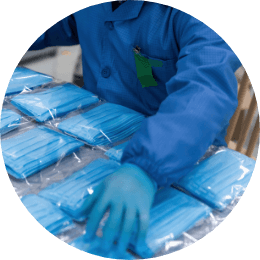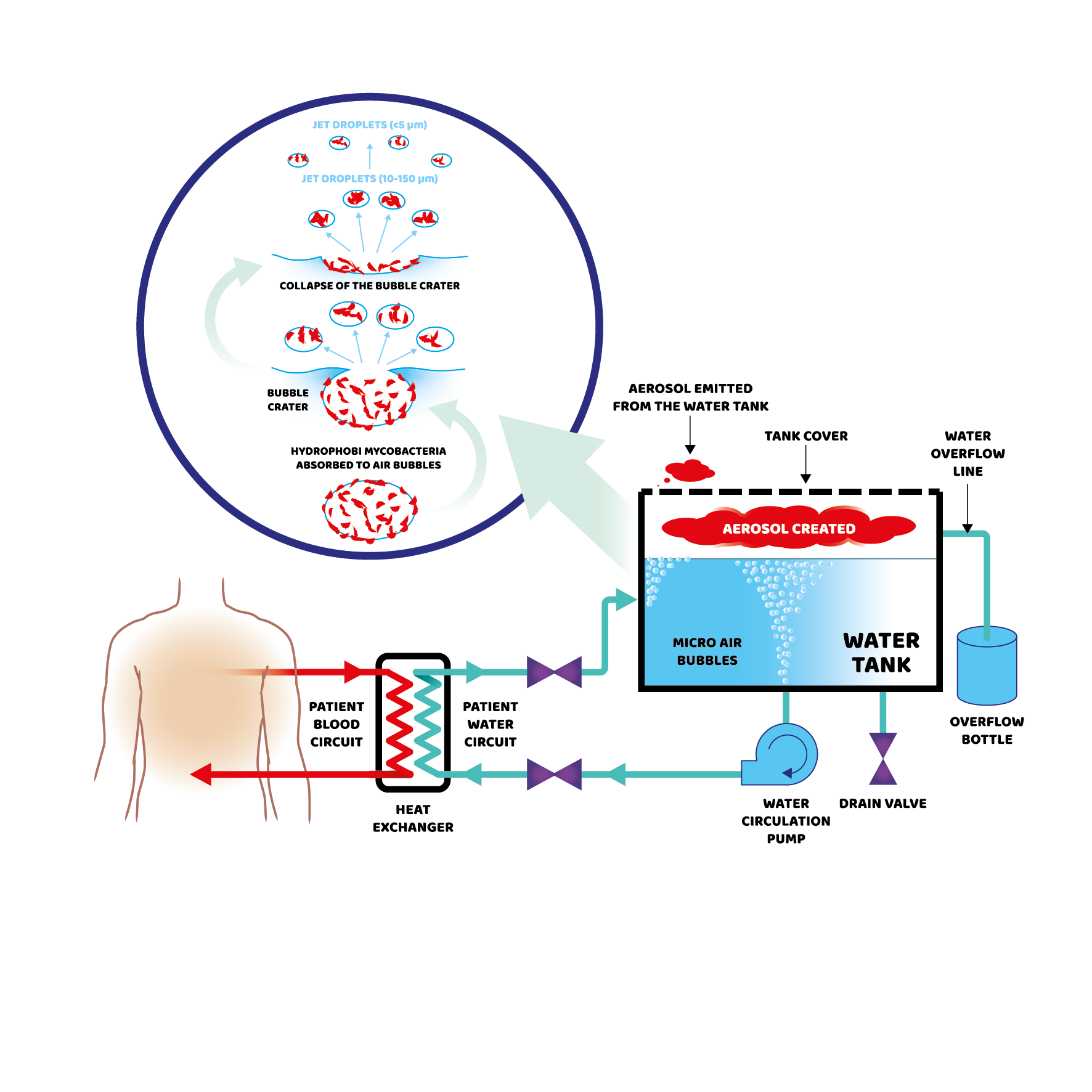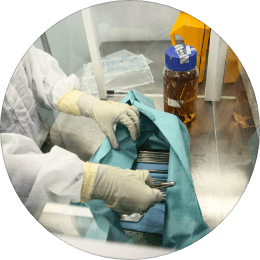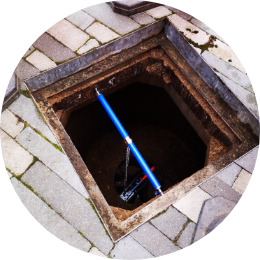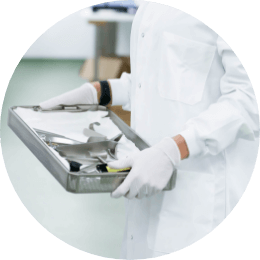A medical equipment manufacturing company had been supplied with a filter product, with the filter material sealed in plastic housing with connectors on either end. The product was discontinued and replaced with an equivalent alternative. The manufacturing company approached us for filter penetration testing, to qualify the performance capability claimed by the new product.
To accommodate, 20/30 Labs produced a bespoke rig (a modification of the bacterial filtration efficacy rig for EN 14683: 2019 Test for Medical Face Masks), where the challenge aerosol was pulled through the filter and bubbled through sampling fluid in an impinger to allow for the measurement of residual bioburden. Several preliminary experiments were carried out to validate the approach, including the use of 0.2µm and 0.45µm PES filter material (off-the-shelf products).
20/30 Labs worked meticulously to produce a test rig, validate the working method, and carry out the filter penetration work, to see if the new product was able to perform as claimed. The project was an example of the ongoing collaborative nature, many of our projects require, to assess proof of concept and provide feedback, and discuss the challenges or changes in requirements based on initial findings.
20/30 Labs work to an ISO 13485: 2016 quality management system which is audited annually. This documents all the processes of lab accommodation, equipment & calibration, training, techniques & method validation, proficiency testing, non-conformances, external audit, and customer service.
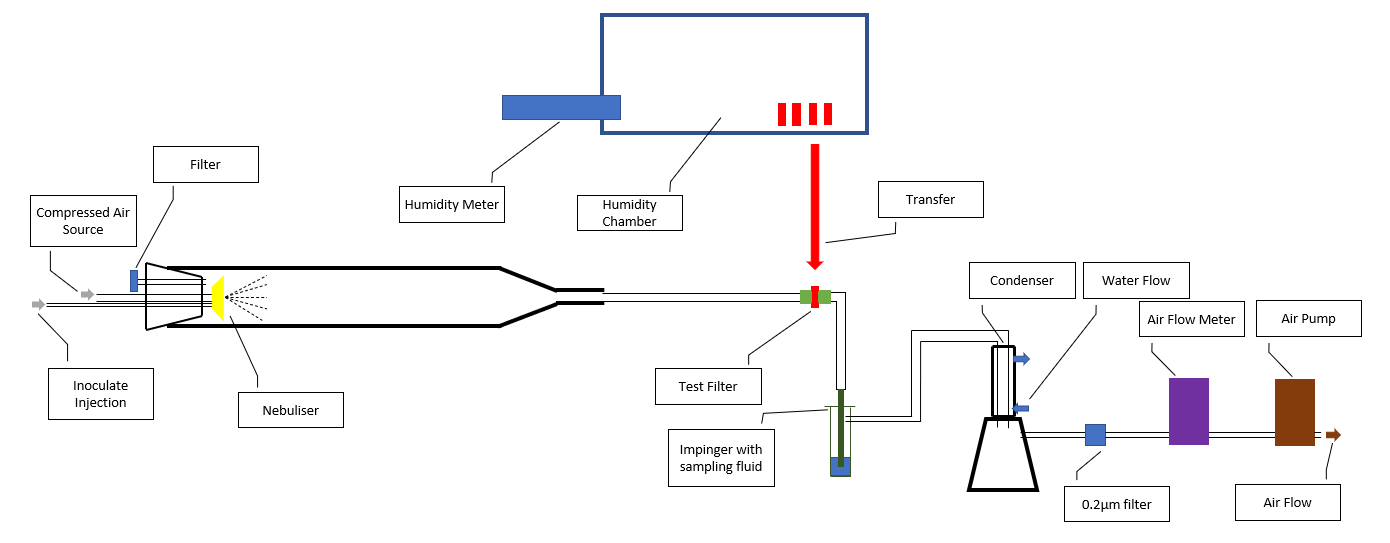
Approach
-
Stage 1 : Protocol
After several discussion regarding client requirements, a validation protocol was developed based on the microbiological claims made by the product they wished to test. The scope of testing was to develop a test rig, and introduce a sufficient challenge aerosol to the test filter material, to prove a reduction by >99.997%.
-
Stage 2 : Method
A testing rig was developed, based on the EN 14683: 2019 filtration efficiency rig. It consisted of a glass aerosol chamber, with a nebuliser attached to aerosolise bacterial solution into the chamber. The challenge aerosol was then pulled though the test filters supplied by the customer, and the air that passed though the filters was bubbled though sampling fluid in a glass impinger. The air was pulled at a constant speed requested by the customer measured by a calibrated air flow meter. The sampling fluid could then be tested for the target bacteria.
-
Stage 3 : Validation & Sample Processing
See ‘Figure 1’ for testing rig.
- Filter samples were conditioned at >90% relative humidity, in a chamber for 100mins.
- Test organisms were S. epidermidis NCTC 11047 and B. diminuta NCTC 11164
- Preliminary testing was carried out in duplicate using standard 0.2µm and 0.45µm PES filter material, as reference material to validate the method and test rig. The reference material was able to achieve a reduction of >99.999% of the challenge aerosol. This proved the experimental set-up was not contaminating the sampling fluid.
- The test filter material in its housing, was then tested using the validated method, and it did not meet the acceptance criteria when tested in duplicate.
- The client was able to contact the filter manufacturer and confirm the pore sized of the new product was in fact 1.2µm. The challenge aerosol formulation was then modified through R&D, to increase the particle size. The rig was also modified to connect to a (six-stage) Andersen Cascade Impactor to evaluate the particle size distribution. Once the minimum concentration required, to produce no detectable particles below the pore size was found, this formulation was used for further experiments.
- All sampling fluids were enumerated by pour plate onto nutrient agar, in duplicate. All agar plates were incubated for 48hrs at 37°C.
-
Stage 4 : Analysis
The CFU/ml of the sampling fluid for each sample was determined. By comparison between positive controls (sampling fluid when no test filter was in place) and the test filter samples, the reduction in bacterial aerosol caused by the test filter could be determined.
-
Stage 5 : Results
The modified aerosol improved the performance of the test filters, but this still did not pass the criteria (22 samples processed), while the off-the-shelf 1.2µm filters performed as expected. The off-the-shelf 1.2µm filters also passed the criteria in an experiment using the original unmodified aerosol.
The conclusion of the study was that the filters submitted could not meet the pass criteria set by the customer. The customer concluded that issues with modifications to the filter housing was likely unsuitable and the cause the test failures.
20/30 labs demonstrated how imperative it is to correctly validate a new method, and follow the processes laid out in the QMS. Without checking the method against already validated filter material, a failure from the test product could just have been a contamination in the test rig.
20/30 labs were also able to demonstrate its research and development capability, by quickly developing a formulation and making relevant changes to the rig to accommodate the new formulation. Our BSL II facility is fully equipped with state-of-the-art equipment including air sampling and cascade impaction devices, 0.1 – 5µm micron airborne particle counters, liquid handling automation, a Class 5 cleanroom, 3D printer and microorganism preservation technology.
Advantages:
- Thorough service agreement process and onboarding.
- Availability (minimum 2 weeks lead time, with potential to expedite).
- Project extension time built in to prevent any delays.
- Direct access to microbiologist
- Method validation, and bespoke testing methods
- State-of-the art equipment
- Quality controls and process controls
- Reliable results
- Audited QMS
- 15 years’ experience in testing medical device microbiological claims
References
- ISO 13485: 2016 Medical Devices QMS. 20/30 Labs Ltd hold the following scope ‘The provision of microbiological testing and consultancy for the medical device industry. Research, microbiological evaluation and decontamination validation of medical devices. The design and manufacture of cleansing and disinfecting solutions and testing consumables for the medical device industry
- BS EN 14683:2019 Medical face masks. Requirements and test methods. Annex A
- ISO 11737-1: 2018 + A1 2021 – Bioburden of medical devices. Microbiological methods. Determination of a population of microorganisms on products. SOP L053 a UKAS accredited test method at 20/30 Labs Ltd.

